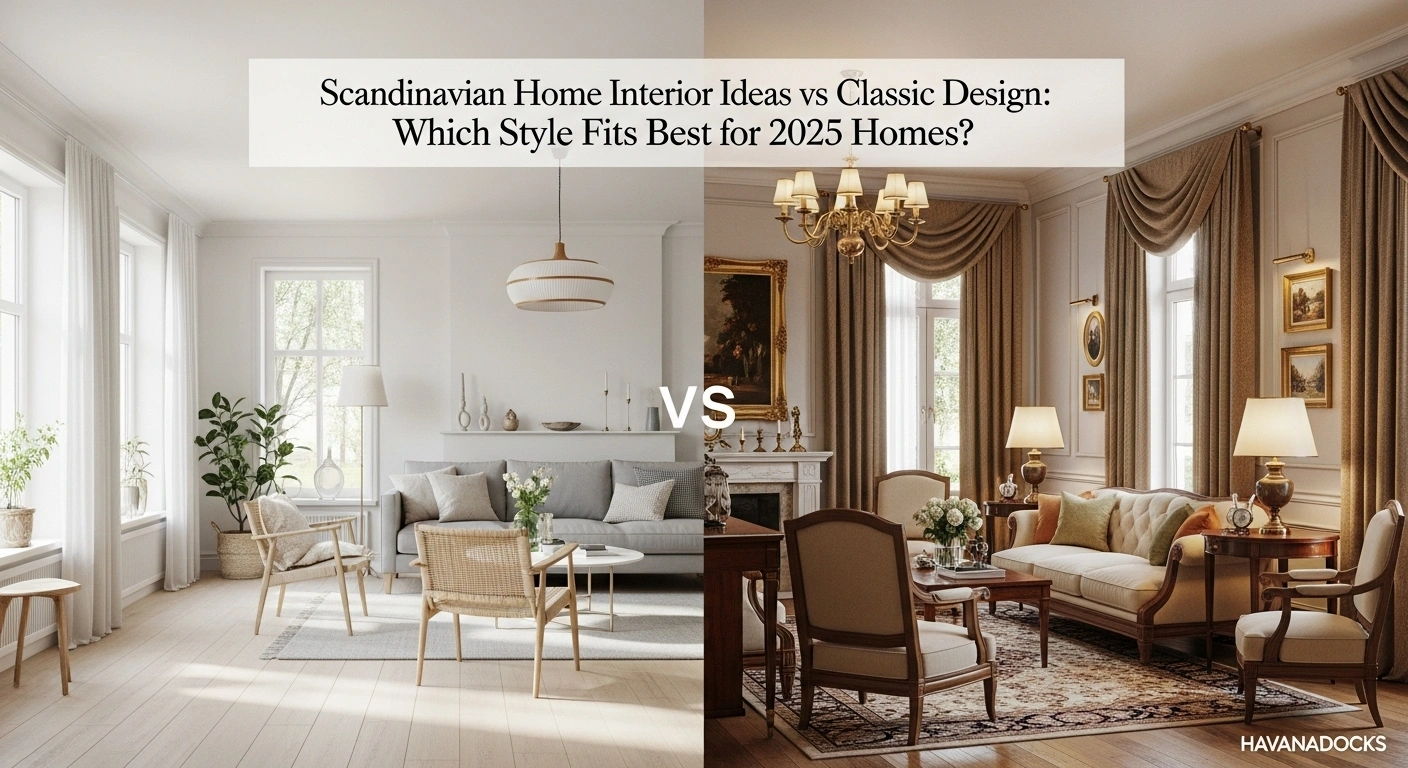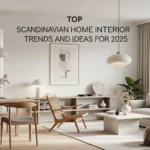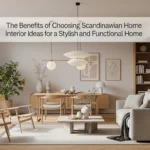Scandinavian Home Interior Ideas vs Classic Design: Which Style Fits Best for 2025 Homes?
Scandinavian Home Interior Ideas vs Classic Design – In our increasingly fast-paced and digitally connected world, our homes have transformed into more than just living spaces; they are our sanctuaries. Choosing an interior design style is no longer merely about aesthetics; it is about crafting an environment that nurtures our well-being and reflects our deepest values. This decision shapes our daily experiences, influencing our mood, productivity, and sense of peace.
As we look towards 2025, two powerful and timeless design philosophies stand out: the serene minimalism of Scandinavian design and the opulent elegance of Classic design. The debate of Scandinavian Home Interior Ideas vs Classic Home Design is about choosing between tranquil simplicity and rich, historical grandeur. This guide will navigate the nuances of each style, helping you discover which path will lead to your perfect home for the future.

The Soul of Serenity: Unpacking Scandinavian Home Interior Ideas
At its core, Scandinavian design is a philosophy of living well with less. It is born from a region with long, dark winters, which fostered a deep appreciation for light, warmth, and nature. This style is not about emptiness but about intentionality, where every object has a purpose and beauty.
The Danish concept of “hygge”—a feeling of cozy contentment and well-being—is the emotional heart of this aesthetic. Scandinavian Home Interior Ideas are built around creating spaces that feel safe, comfortable, and profoundly calming. It is an invitation to slow down, be mindful, and find joy in the simple, beautiful moments of everyday life.
This design language speaks through clean lines, uncluttered surfaces, and an unwavering commitment to functionality. Natural materials like light-toned woods, wool, linen, and leather are celebrated for their honest textures and organic warmth. The result is a home that feels like a breath of fresh air, a serene retreat from the chaos of the outside world.
The Grandeur of a Golden Age: Defining Classic Home Design
Classic Home Design is a tribute to history, order, and enduring elegance. Rooted in the principles of ancient Greek and Roman architecture, this style exudes a sense of formality, symmetry, and perfect proportion. It is a statement of permanence and refined taste, designed to feel both luxurious and beautifully composed.
This aesthetic is not about chasing fleeting trends; it is about investing in timeless beauty that will never go out of style. It draws inspiration from centuries of artistry, incorporating ornate details, rich materials, and sophisticated craftsmanship. A home designed in the classic style feels established, secure, and grand.
The hallmark of Classic Home Design is its meticulous attention to detail. From intricate crown moldings and ceiling medallions to gracefully carved furniture and sumptuous textiles, every element is carefully chosen to contribute to a harmonious and majestic whole. It is a style that whispers luxury and sophistication, creating an atmosphere of comfort and grace.
The Color Palette: Light & Airy vs. Rich & Royal
The color story of Scandinavian Home Interior Ideas is one of light and tranquility. The primary palette consists of soft whites, muted grays, and pale, earthy tones that maximize natural light. This creates an atmosphere that is open, airy, and visually expansive.
Pops of color are used sparingly and intentionally, often through subtle accents like a dusty blue cushion, a soft blush throw, or green from indoor plants. The overall effect is serene and cohesive, a gentle backdrop for a peaceful life. The goal is to create a canvas that is soothing to the eye and calming for the soul.
In stark contrast, the palette of Classic Home Design is rich, warm, and dramatic. It favors creamy off-whites, deep beiges, and sophisticated neutrals as a base, layered with opulent jewel tones like sapphire blue, emerald green, and ruby red. These colors create a sense of depth, intimacy, and undeniable luxury.
Metallic accents, particularly gold, brass, and bronze, are essential to this style, adding a touch of shimmer and glamour. Dark wood tones and rich fabrics further enhance the feeling of warmth and opulence. The classic palette is designed to feel inviting, majestic, and elegantly timeless.
Materiality and Texture: Natural Simplicity vs. Ornate Luxury
Materials are fundamental in expressing the core philosophy behind Scandinavian Home Interior Ideas. There is a profound reverence for nature, which is reflected in the prevalence of light-toned woods like ash, birch, and pine. These woods are often left in their natural state or with a light finish to showcase their organic grain and beauty.
Texture is introduced through natural textiles such as wool, linen, cotton, and shearling, which add layers of softness and comfort. Leather and felt are also common, providing a tactile richness that complements the minimalist forms. The focus is on materials that are honest, sustainable, and pleasing to the touch.
On the other hand, Classic Home Design celebrates materials synonymous with luxury and permanence. Dark, polished woods like mahogany, cherry, and walnut are used for furniture and flooring, their deep tones conveying a sense of history and quality. Stone, particularly marble and granite, is used for fireplaces, countertops, and flooring, adding a cool, sophisticated grandeur.
The textures in a classic interior are plush and refined. Think of the soft sheen of silk draperies, the deep pile of a velvet sofa, or the intricate patterns of a brocade armchair. These materials are chosen for their visual richness and luxurious feel, creating an environment of comfort and splendor.
Furniture and Form: Function First vs. Formality Foremost
Furniture in Scandinavian Home Interior Ideas is a masterclass in form following function. Each piece is designed to be as practical as it is beautiful, often featuring clean lines, organic curves, and an elegant simplicity. Iconic designs from masters like Hans Wegner and Arne Jacobsen exemplify this ethos, proving that functional items can also be high art.
You will find multi-functional furniture, clever storage solutions, and a layout that promotes ease of movement and an uncluttered lifestyle. The emphasis is on quality craftsmanship and sustainable design, creating pieces that are built to last and be loved. This approach ensures that a home is not only beautiful but also effortlessly livable.
Conversely, furniture in Classic Home Design is defined by its formality and ornate beauty. Pieces often feature intricate carvings, curved cabriole legs, and luxurious upholstery, arranged in symmetrical layouts to create a sense of balance and order. The scale is often grand, with substantial pieces like Chesterfield sofas and stately armoires serving as focal points.
The emphasis is less on multi-functionality and more on creating designated spaces for formal activities, such as entertaining or dining. Every piece is chosen for its artistic merit and its ability to contribute to an overall narrative of timeless elegance. This is furniture that makes a statement about heritage and refined living.
The 2025 Lens: Adapting These Styles for Modern Living
Looking ahead to 2025, our homes must be more versatile than ever before. They need to support our well-being, accommodate hybrid work-life models, and reflect a growing desire for sustainability and personal expression. The crucial question in the Scandinavian Home Interior Ideas vs Classic Home Design debate is how well each style adapts to these modern demands.
The future of home design is about creating spaces that are not just beautiful but also intelligent, responsive, and deeply personal. We need interiors that can energize us for a day of work, calm us at the end of the day, and provide a beautiful backdrop for our lives. Both Scandinavian and Classic styles offer compelling paths forward, but they meet these future needs in very different ways.
This is where the theoretical becomes practical. We must analyze how the philosophies of minimalism and maximalist elegance translate into a home that works for the complexities of modern life. Can the simplicity of Scandinavian design handle our tech-filled lives, and can the formality of classicism flex to our need for casual comfort?
Sustainability and Wellness: A Natural Fit
In an era defined by a collective move towards conscious living, sustainability is a non-negotiable aspect of modern design. Here, Scandinavian Home Interior Ideas have a distinct, inherent advantage. The style’s deep-rooted emphasis on natural, renewable materials like wood, wool, and linen aligns perfectly with eco-friendly principles.
The Scandinavian ethos of buying fewer, better things—investing in quality craftsmanship that lasts a lifetime—is the very definition of sustainable consumption. Furthermore, its focus on maximizing natural light, reducing clutter, and bringing nature indoors directly contributes to mental and emotional wellness. This design philosophy is fundamentally about creating a healthy, balanced environment for both its inhabitants and the planet.
Classic Home Design can also be a champion of sustainability, albeit through a different lens. Its core principle is investing in high-quality, heritage pieces of furniture that are built to be passed down through generations. This “buy it for life” mentality is a powerful antidote to today’s throwaway culture.
The challenge lies in sourcing authentic, well-made pieces rather than mass-produced replicas. When executed thoughtfully, a classic interior promotes a sense of stability and order, which can be profoundly calming and beneficial for mental wellness. The key is to blend its timeless principles with modern, eco-conscious material choices.
The Hybrid Home: Functionality vs. Formality in a WFH World
The rise of the hybrid work model has fundamentally reshaped our relationship with our homes. Our spaces must now seamlessly transition between being professional offices, relaxing living areas, and personal sanctuaries. This demand for flexibility and functionality is a critical test for both design styles.
How does a home designed for serene simplicity or formal elegance accommodate a Zoom call in the living room or a creative project on the dining table? This is where the core tenets of Scandinavian Home Interior Ideas vs Classic Home Design truly show their strengths and weaknesses. The winning style will be the one that best supports this new, fluid way of living.

Scandinavian’s Advantage: The Multi-Functional Haven
This is where Scandinavian Home Interior Ideas truly shine and solidify their relevance for 2025. The style’s inherent focus on minimalism, smart functionality, and adaptable layouts makes it perfectly suited for the hybrid home. An uncluttered environment reduces visual noise and mental distraction, which is essential for concentration and productivity when working from home.
Scandinavian furniture is often designed to be modular or multi-purpose, allowing a space to be easily reconfigured. A dining table can double as a spacious desk, while beautifully designed storage can discreetly hide away work materials at the end of the day. This seamless blend of work and life, form and function, makes it an incredibly practical and forward-thinking choice.
Classic’s Challenge: Carving Out a Modern Workspace
The inherent formality of Classic Home Design can present a challenge in the fluid context of a work-from-home lifestyle. Its emphasis on designated rooms and symmetrical, often static, furniture arrangements can make it difficult to integrate a workspace into a living area without disrupting the room’s harmony. A dedicated home office, decorated in the classic style, is a perfect solution, but not everyone has that luxury.
The key to making Classic Home Design work for a hybrid world is to embrace a “transitional” approach. This involves blending classic elements—like an ornate desk or a traditional armchair—with modern, ergonomic necessities. It’s about maintaining the aesthetic’s elegance while introducing the flexibility required for modern living, proving that even a style rooted in history can adapt to the future.
The Verdict: Scandinavian Home Interior Ideas vs Classic Home Design – Who Wins?
So, after exploring the philosophies, palettes, and practical applications, which style emerges as the victor for 2025? The truth is, there is no single winner. The best choice is not determined by a trend report, but by your personal lifestyle, values, and what you need your home to do for you.
The Scandinavian Home Interior Ideas vs Classic Home Design debate is less about a competition and more about self-discovery. Are you seeking a calm, minimalist retreat that promotes mindfulness and simplicity? Or do you crave a rich, elegant sanctuary that connects you to history and timeless beauty?
To help you decide, consider these lifestyle prompts. Your answers will illuminate the path that is right for you, ensuring your home is a true reflection of who you are and who you want to be. The ultimate luxury is living in a space that feels authentically yours.
Choose Scandinavian Home Interior Ideas If…
You should embrace Scandinavian Home Interior Ideas if you value a “less is more” philosophy. This style is for you if you find peace in organized, uncluttered spaces and feel a deep connection to nature. It is the perfect choice for those who need their home to be a flexible, multi-functional environment that supports a dynamic, modern lifestyle.
If sustainability is a key priority and you prefer investing in simple, beautifully crafted pieces that are both functional and artistic, Scandinavian design will resonate with you. It is for the individual who seeks a serene, light-filled haven that promotes mental clarity and well-being. This is the design for a mindful, intentional future.

Choose Classic Home Design If…
You should opt for Classic Home Design if you are drawn to history, tradition, and a sense of permanence. This style is for you if you find comfort in symmetry, order, and the enduring beauty of ornate details. It is the ideal choice for those who love to entertain formally and want their home to make a statement of elegance and sophistication.
If you believe in investing in heritage furniture and creating a home that feels luxurious, curated, and grand, the classic aesthetic is your calling. It is for the individual who views their home as a legacy, a beautifully composed sanctuary filled with art, history, and personal treasures. This is the design for a life of timeless grace.
Conclusion: Crafting Your Personal Sanctuary for 2025 and Beyond
The conversation surrounding Scandinavian Home Interior Ideas vs Classic Home Design reveals two distinct yet equally valid paths to a beautiful home. Scandinavian design offers a future-focused vision of serene, sustainable, and functional living, perfectly attuned to the demands of our modern, hybrid lives. It is a calming balm for a busy world, a minimalist sanctuary that nurtures the soul.
In contrast, Classic Home Design provides a powerful connection to the past, offering a sense of stability, luxury, and timeless elegance that transcends fleeting trends. It is a grand statement of heritage and refined taste, creating a sanctuary of rich comfort and sophisticated order. The choice is a reflection of the life you want to cultivate within your walls.
Ultimately, the best design for your 2025 home may not be a strict adherence to one style, but a thoughtful blend of both. Imagine the clean functionality of Scandinavian furniture set against the rich texture of a classic color palette, or the ornate detail of a classic mirror in a minimalist, light-filled room. The most exciting and personal spaces are often born from this beautiful dialogue between simplicity and grandeur, proving that the ultimate style is the one you create yourself.






